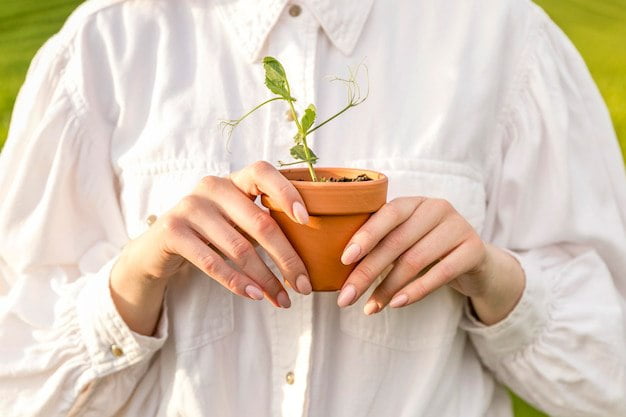The second plot, optimal. As in the case of the first plot, dumbfounded. All matches are coincidental and the characters are fictitious. (Read the first episode here).
– I’m still wondering if anyone has ever received the yield declared by the originator of the variety? – The farmer didn’t budge.
– Certainly. And these are not the farmers who have grown to grandfather’s methods, the weather station confidently said. – You, farmers, like to talk with agronomists at agricultural exhibitions, find out the list of productive varieties, simple technological operations, saddle new equipment, but when it comes to innovation, you disappear like a shadow in the rays of the setting sun. But it is I who have the keys to unlocking the biological potential of the plant!
– Really? – The farmer never ceased to be surprised.
– For example, 2 kg of strawberries from a bush or 5 kg of blueberries from a bush can be obtained only by creating ideal conditions for the plant, that is, by compensating for weather vagaries. You can’t ignore environmental factors, can you? Each field has its own microclimate, characteristics of the natural environment, and under the influence of these parameters, the yield can decrease quite significantly. I heard, probably, this spring in Ukraine and Poland, return frosts damaged from 15 to 80% of strawberry plantations in the flowering phase.
And the weather station gives you a brush in your hands – take it and draw, create such conditions under which the talents of the plant will be revealed by 100% both in qualitative and quantitative terms.
Man, do you know who steals your yields?!
– Steals?! Strong words! Who?
— Environment or adverse weather conditions, harmful microorganisms, and misuse of technologies, untimely completed technological operations, partially/completely missed operations.
– Can you explain what you mean…?!
– To get the yield declared by the variety producer, the plant must be at the optimum, that is, the parameters of the soil and atmosphere, the amount of nutrients – in a plant-friendly norm, corresponding to the phase of plant development. And the longer all these parameters have an optimal value, especially in the critical phases of plant growth: the beginning of development, flowering, setting, the more unexpected the harvest numbers will be for you. Understand? The more precisely you please the plant, the more generously it will thank you!
Well, tell me, can you influence the environment? But with me you can! More precisely, you can make decisions on the farm in a balanced, reasonable manner, minimizing the risks associated with the whims of the weather as opposed to not the visual assessment. Although I am a virtual assistant, I am always at work, I don’t go on vacation, I don’t drink … I’m kidding, but in every joke, there is only a fraction of a joke, and the rest is true.
If you knew that in 2 days there would be frosts on the ground, you would treat the plantation with an antistress agent, cover it with agrofibre or turn on sprinkling and save your crop.
Unfortunately, when you already see with your own eyes the consequences of a plant being in suboptimal, stressful conditions, it is too late to deal with them. And I will warn you in advance about situations when you need to act urgently, e.g:
- extreme temperatures (both high and low),
- strong wind,
- rain,
- the likelihood of diseases and pests,
- the need to start / end the next watering,
- the need for fertilizer.
Whether the real yield will coincide with the yield of the originator depends only on whether you will listen to my prompts.
 – I have been in agribusiness for many years but did not delve into it. Let’s say I believe you. But how do you know that microorganisms are approaching?!
– I have been in agribusiness for many years but did not delve into it. Let’s say I believe you. But how do you know that microorganisms are approaching?!
– My eyes are sensors: they see and feel everything. No, I am not a fortune teller, my forecasts (not predictions!) are based solely on the data received. All diseases and pests have their own phases of development and appear in a field or orchard under certain factors that are optimal for them, such as temperature and humidity, precipitation, wind, and they depend largely on the duration of these factors. I measure and record these parameters, thus collecting weather data for a certain area over a long period. I work without breaks; I take readings of sensors every 5-10 minutes around the clock. This data, in combination with other studies and models, is what I use to predict the appearance of microorganisms. For example, there are climatically favorable conditions for the appearance of strawberry mites on strawberries. For its rapid development and reproduction, a temperature regime of 19-25 ° C and high atmospheric humidity of 80-90% are required.
My programs also use the accumulated historical data for previous periods and seasons, identify patterns and relationships between them, and then calculate the probability of exceeding the threshold of severity for various diseases and pests. In addition to weather data, I can record field history, i.e. store information about soil analyzes, the presence of plant diseases and their photographs, the use of plant protection products, fertilizers.
– How are we farmers, working without you?
Just like hands without a head. It’s good if profits are zero, but much more often you are losing money!
Photo: Freepik.com
To be continued…
The use of the site materials is free if there is a direct and open for search engines hyperlink to a specific publication of the East-Fruit.com website.




